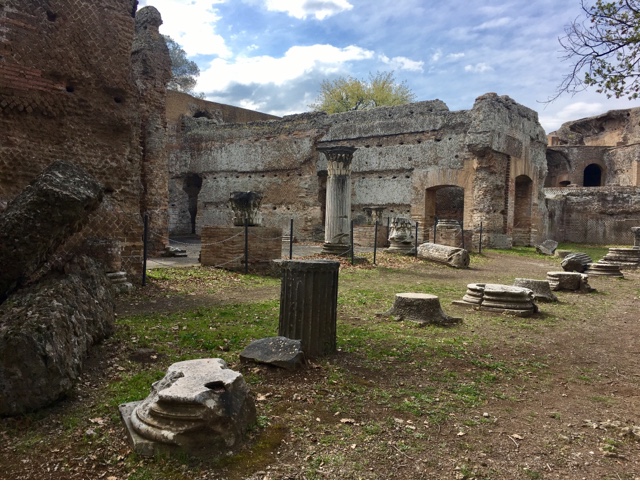 |
| Pool at Hadrian's Villa |
Even today, the piscinae (fish pools) that Hadrian built 2000 years ago still have cod swimming in them. The villa also was decorated with beautifully intricate mosaics, emblematic of the power and opulence of the Roman empire in the early first century CE.
The villa encompasses a massive area, and should probably called a small town constructed for one family. After wandering the ruins for almost two hours, we had merely scratched the surface of the insights this site has into ancient life and into the mind of one of Rome's most successful emperors.
After the Villa, we traveled by bus to Cumae in the Naples region where we entered the cave of the Sybil, a prophetic fortune teller made famous by Virgil's Aeneid. The cave is said to be where the Sybil led Aeneas into the underworld to receive his destiny. In reality, the carved caverns simply lead to a small chamber, but perhaps the entry to the underworld was sealed off with the fall of the Romans.










Looks like you had perfect weather to stroll around Hadrian's Villa. Were the swans still there? Did you see the arc-shaped triclinium benches at the Serapeum? Such a picturesque place! Nice write-up, Nick. So glad to know you are on this trip! Best to everyone.
ReplyDelete